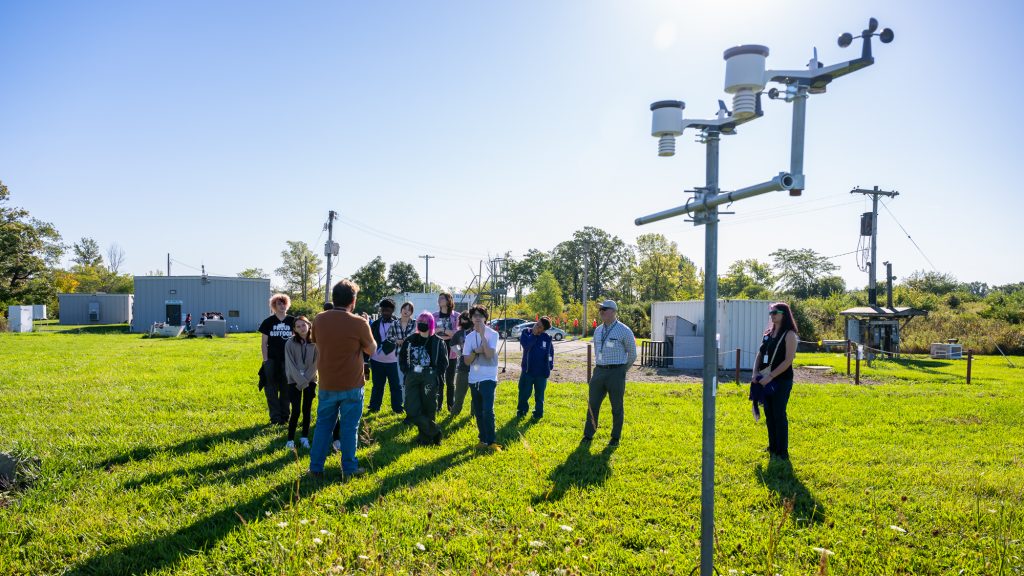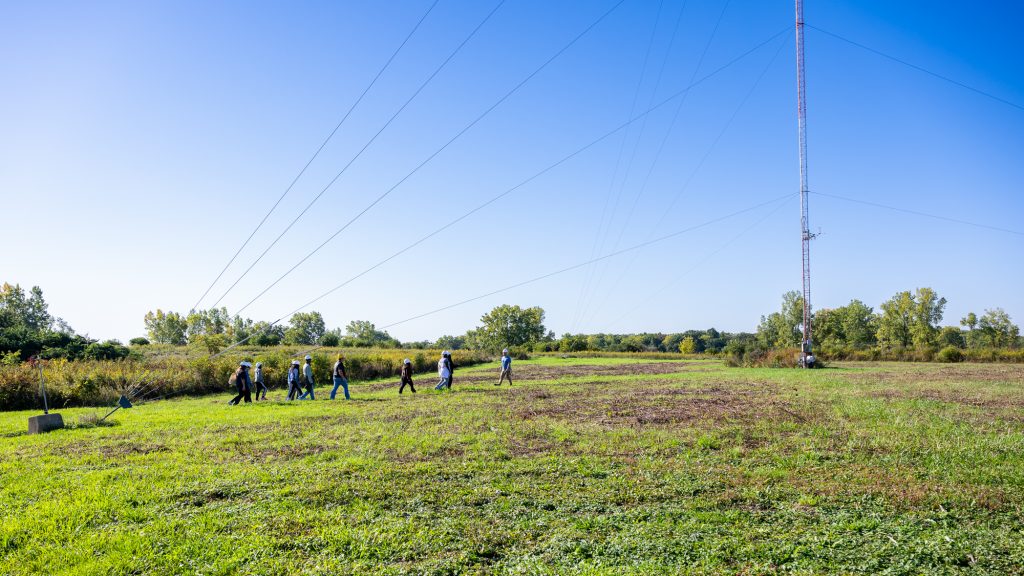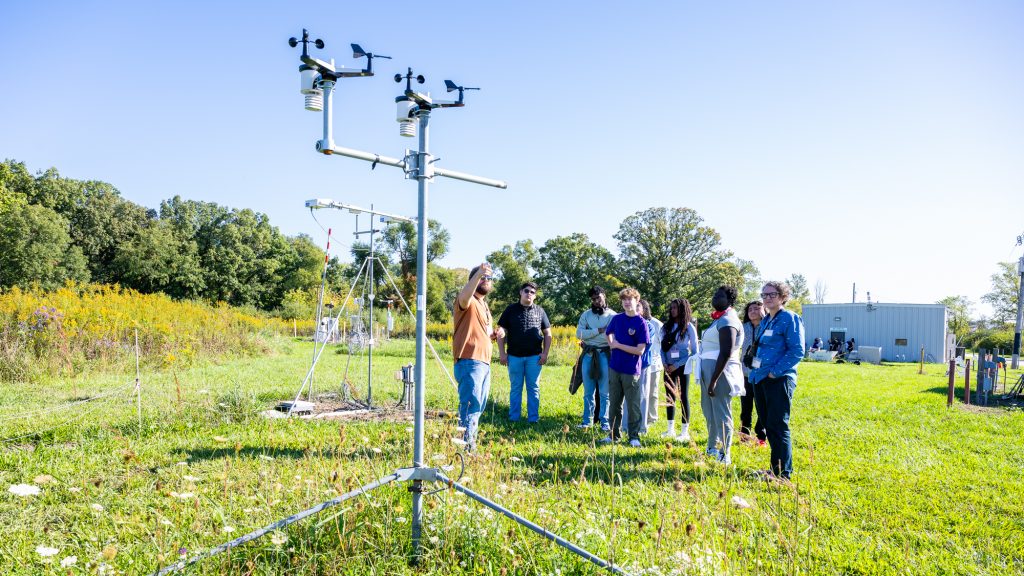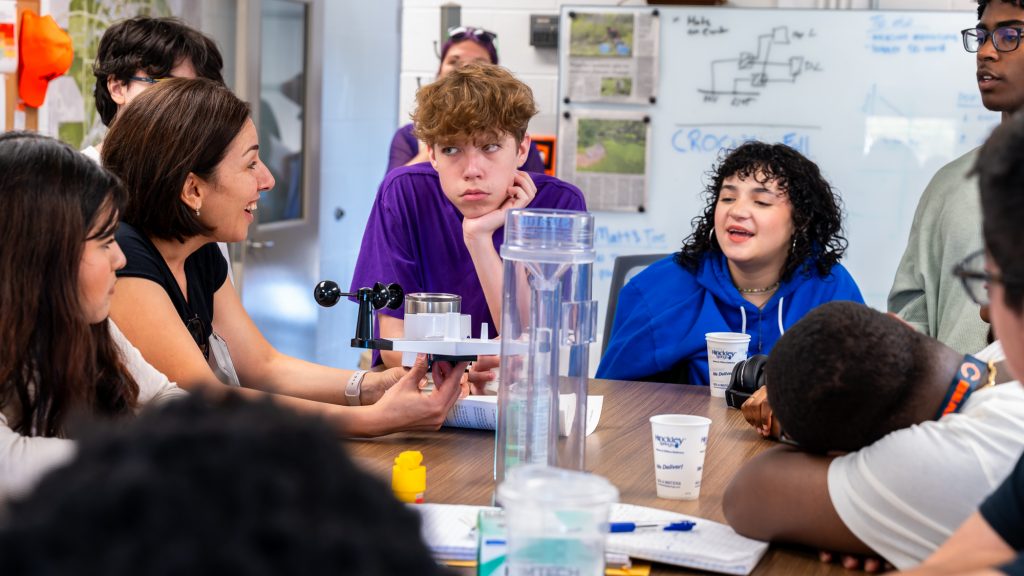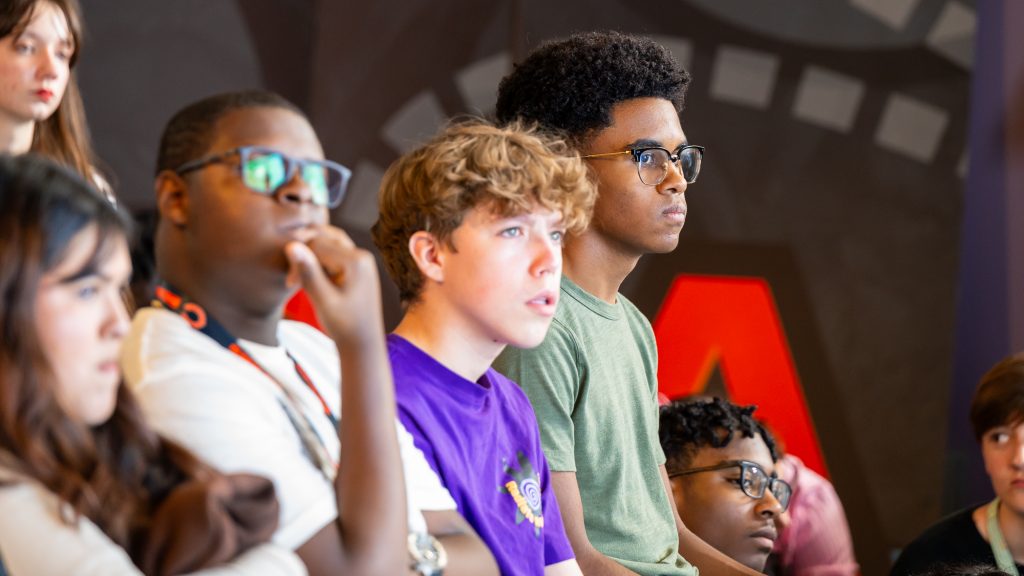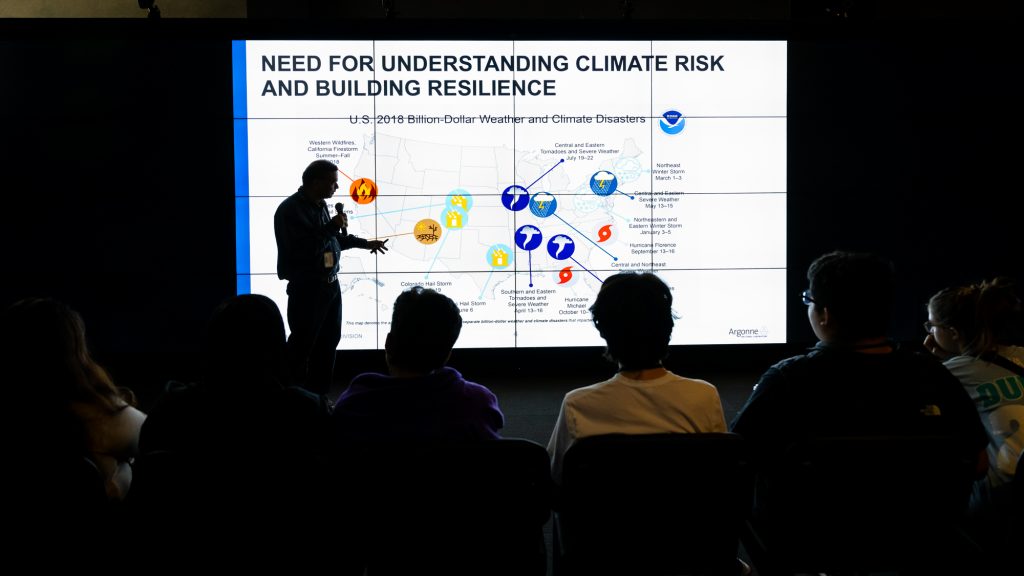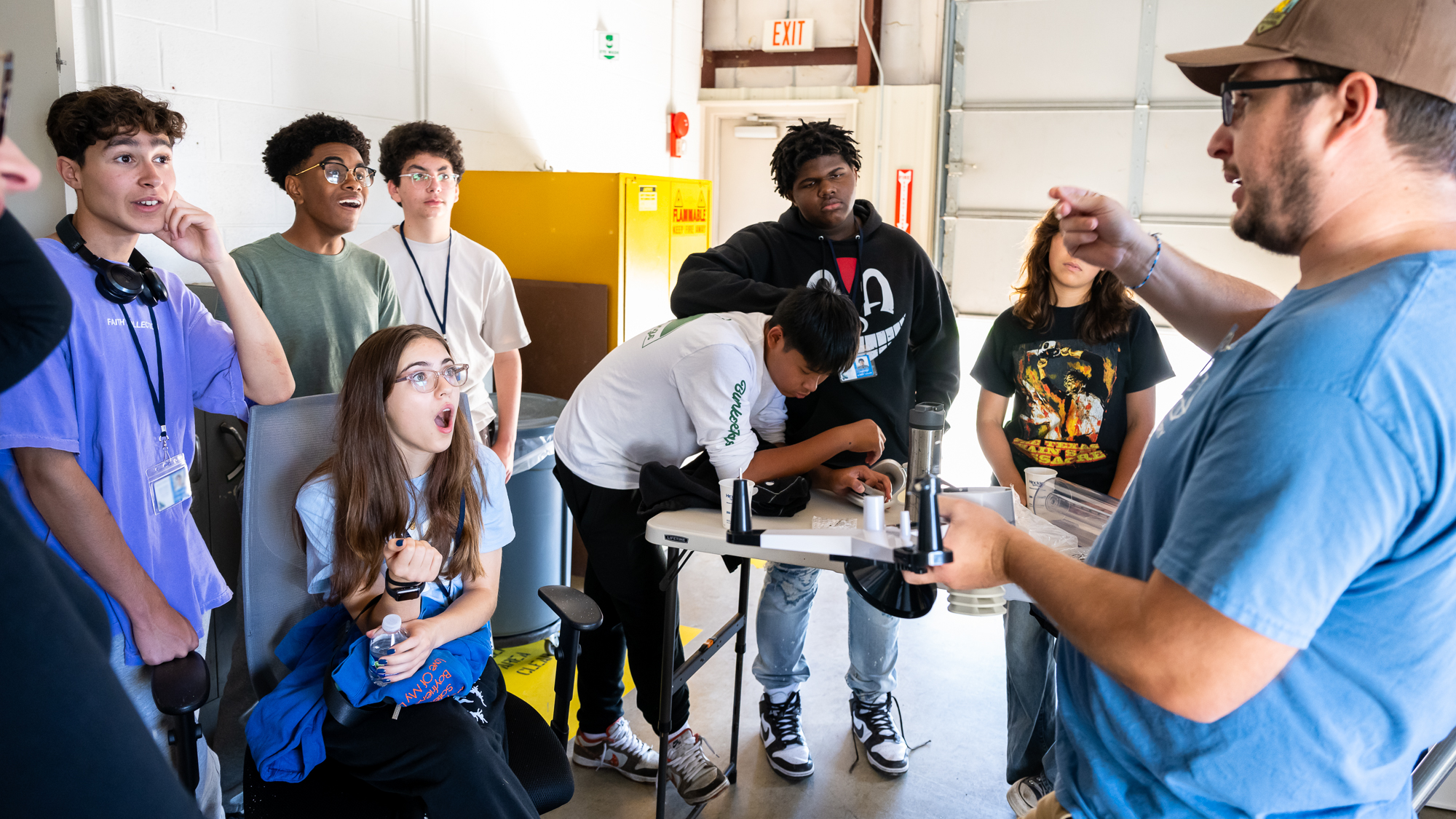On a warm October day outside of the Department of Energy’s Argonne National Laboratory, a bus filled with high school students from Bennett Day School pulled into a gravel drive surrounded by nearly 20 acres of land and 60 scientific instruments. The students were there to visit the Argonne Testbed for Multiscale Observational Science (ATMOS) — the heart of instrumentation for Community Research on Climate and Urban Science (CROCUS).
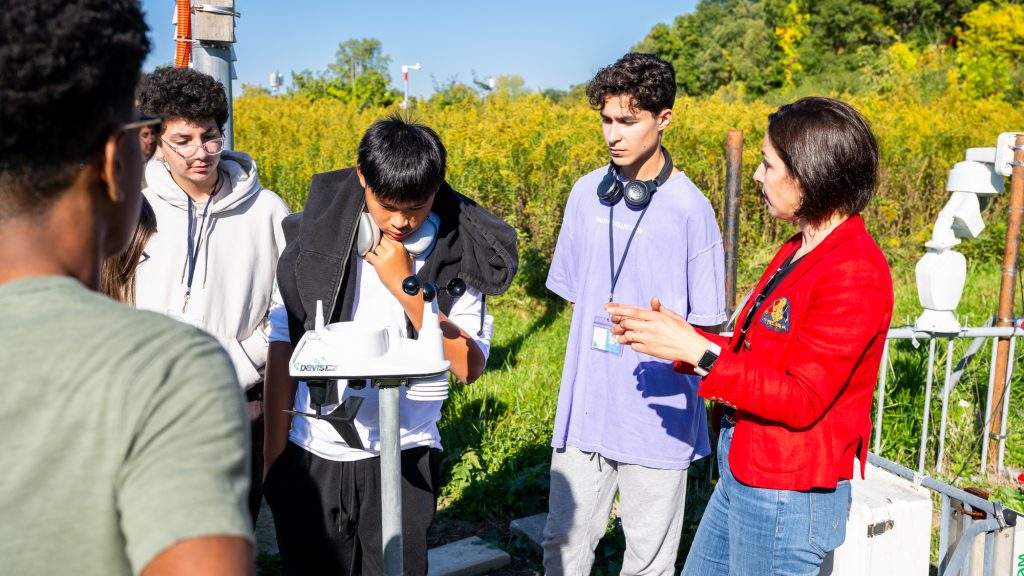
Matt Tuftedal was one of the researchers leading the tour. Tuftedal is an atmospheric scientist at Argonne and the ATMOS Facility Manager. “It’s always really exciting to open our doors to students,” said Tuftedal. “The work that we’re doing to understand climate change will directly impact this generation as they work to meet the challenges of a warming climate. We want to give students the information they need and help them see the possibilities of careers in climate science.”
Tuftedal, along with Argonne researchers Paytsar Muradyan and Joe O’Brien, introduced the students to CROCUS’ work on urban climate research and hiked them through the field station’s active instrument sites where researchers troubleshoot CROCUS equipment before deploying it in the city. In the background, a 60-meter tower pointed into the blue sky. The tower, like many other impressive elements of ATMOS, helps tell the story of how the atmosphere is linked to the land.
“Climate science involves understanding a complex series of interactions,” said Muradyan who oversees remote sensing instruments that record data on things like the height of clouds and the aerosols present in the atmosphere.
She explained it to students as shooting lasers at clouds. That might sound like something you’d see at a Taylor Swift concert, but measurements like these help scientists understand how things like pollution and cloud cover in the sky can impact temperature and air quality for people on the ground.
“In places like Chicago, you have weather from the great plains interacting with moist air from the great lakes, and you have a large city with tall buildings and paved surfaces that trap heat,” Muradyan said. “You also have transportation hubs and industry that emit greenhouse gases. All of those factors influence the ways that people live and experience weather and climate. Capturing good measurements related to what’s happening in the Chicago area is critically important for planning for the future.”
As the day advanced, students got to work directly with researchers and scientists, participate in hands-on activities, learn about climate change and explore the grounds. They helped construct pieces of a weather monitoring equipment and became familiar with taking measurements on temperature, wind, rain, radiation and the interaction between greenhouse gases (like methane and CO2) and land.
“What’s great about tours like this is that students can take what they’ve learned and apply it directly to developing their school’s own weather station,” said O’Brien. He and others are studying how data from a variety of weather stations, both professional and amateur, can provide more details about the regions climate.
While some of the instruments at ATMOS are costly and complex, other things like simple rain gauges and wind-speed monitors are fairly inexpensive and are readily available to consumers.
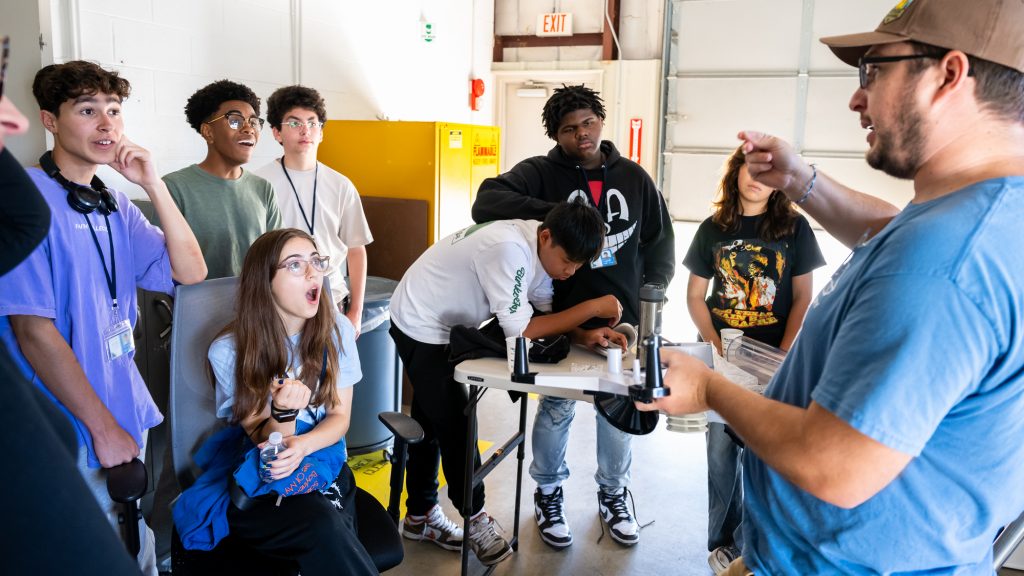
“We’re showing them the tools,” said O’Brien, “but we’re also hopefully empowering them to get outside and collect their own data. That’s how you grow your curiosity and start seeing yourself as a scientist.”
The day concludes in Argonne’s cafeteria where the students learn about internship opportunities and the career paths of CROCUS researchers.
Developing the next generation of scientists to tackle future challenges is of critical importance to the work of CROCUS. School groups have an opportunity to not only learn about climate change, but to see how CROCUS instrumentation deployed in many of their own neighborhoods is working to strengthen understanding and inform community solutions.
If your school group wants to participate in a tour of ATMOS, contact us at [email protected] or visit crocus-urban.org for more information.
